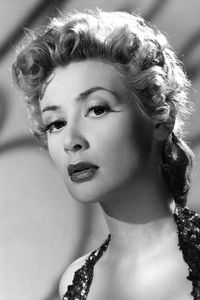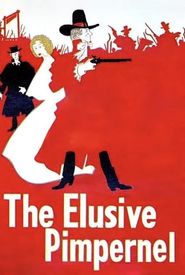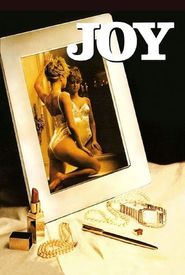Danielle Godet, a truly extraordinary and versatile individual, burst onto the scene on June 30, 1927, in the iconic City of Light, Paris, France, a city renowned for its rich cultural heritage and artistic flair. Born to a father who was a successful industrialist and a mother who was a devoted homemaker with a deep and abiding love for piano and classical music, Danielle naturally inherited her artistic inclinations from her maternal figure, who played a pivotal role in shaping her early years. This paragon of dedication and nurturing took great pains to provide her daughter with a comprehensive education in piano and dance, which Danielle would later go on to excel in, claiming a prestigious first prize at the esteemed Léopold Belland dance competition, a testament to her hard work and talent.
Danielle's remarkable career in the film industry was marked by an initial series of unexpected obstacles, which in turn had a profound and lasting impact on the direction her professional life would ultimately take.
Danielle's relentless pursuit of excellence in the art of acting led her to take a pivotal step, enrolling in drama lessons under the tutelage of the revered instructors Maria Ventura and Jean Martinelli. This marked a significant turning point in her career, as it would ultimately prepare her for the challenges and opportunities that lay ahead.
In 1947, Danielle's perseverance was rewarded with her big break, as the illustrious director René Clair handpicked her for the leading role in his highly anticipated film, Man About Town. At first, Danielle was ecstatic and filled with anticipation, envisioning the possibilities and accolades that this role could bring.
However, as the production unfolded, Danielle's experience was gradually marred by disappointment and frustration. Despite her initial enthusiasm, she found herself relegated to a minor role in the film, a development that was both disheartening and demoralizing.
Danielle Darrieux's illustrious career trajectory, once marked by a string of notable successes, unfortunately experienced a significant downturn, as she was subsequently replaced by the talented Cécile Aubry in the 1949 film production of Henri-Georges Clouzot's cinematic masterpiece, Manon, a dramatic departure from her previous roles, which had garnered widespread critical acclaim and commercial success.
Before this minor setback, Danielle had the extraordinary privilege of co-starring alongside the illustrious French actor Yves Montand in the 1948 cinematic masterpiece, The Idol, a collaborative effort that showcased her remarkable range and adaptability as a performer, allowing her to demonstrate her multifaceted talents and capabilities on the silver screen.
Danielle's impressive acting abilities were not fully showcased until her pivotal role in Henri Calef's 1950 cinematic masterpiece, La souricière, which marked a significant turning point in her career.
As she took on this challenging part, Danielle was able to convincingly portray a wide range of emotions and characters, thereby showcasing her remarkable acting range and versatility.
By successfully moving beyond her earlier typecasting as an ingénue, Danielle was able to establish herself as a multifaceted actress, capable of tackling a variety of roles and demonstrating her depth and nuance as a performer.
This breakthrough role in La souricière served as a testament to Danielle's growth and development as an actress, and it paved the way for her to take on even more complex and demanding roles in the years to come.
As a result of her outstanding performance in La souricière, Danielle was able to solidify her position as a talented and respected actress, and she went on to enjoy a long and distinguished career in the world of cinema.
Danielle's professional journey, building upon her initial breakthrough, was characterized by a succession of modestly budgeted and lower-tier cinematic endeavors, marked by a diverse range of film titles that included, but were not limited to, Votre dévoué Blake, The Versailles Affair, Cuatro en la frontera, Autopsy of a Criminal, and a multitude of other productions.
Throughout her illustrious career, she endeavored to transcend the boundaries of her current status, actively seeking out more challenging and esteemed projects to further hone her craft and elevate her professional standing.
However, despite her unwavering dedication and perseverance, she found herself repeatedly typecast in a series of lackluster films, her creative potential stifled by the constraints of her limited opportunities.
As the years went by, she became increasingly frustrated by her inability to break free from this cycle of artistic stagnation, her passion and enthusiasm slowly giving way to a sense of disillusionment and disappointment.
Despite her tireless efforts to revitalize her career, she remained trapped in this rut, her talent and potential unrealized, her dreams of artistic expression and fulfillment slowly slipping away.
Notable exceptions to the prevailing trend of her career were the collaborations she embarked upon with highly acclaimed and respected directors, such as Jean-Pierre Mocky, a renowned French filmmaker, Jean Dewever, a prominent Belgian director, Mauro Bolognini, an Italian maestro of the silver screen, and Juan Luis Buñuel, a Spanish filmmaker and son of the illustrious Luis Buñuel, whose involvement in her projects served to somewhat mitigate the negative impact of her reputation in the industry, thereby helping to salvage her professional standing.
Danielle Godet's professional journey took an unforeseen turn, as her career path remained separate from that of the esteemed film directors Jean Renoir, Jean-Pierre Melville, Claude Autant-Lara, Louis Malle, and Jacques Becker.
Had their trajectories converged, Godet's career would likely have undergone a profound metamorphosis, taking a distinct and divergent course. This unforeseen convergence of paths could have led to a vast array of creative opportunities and experiences, ultimately influencing the development of her artistic vision and style.




















